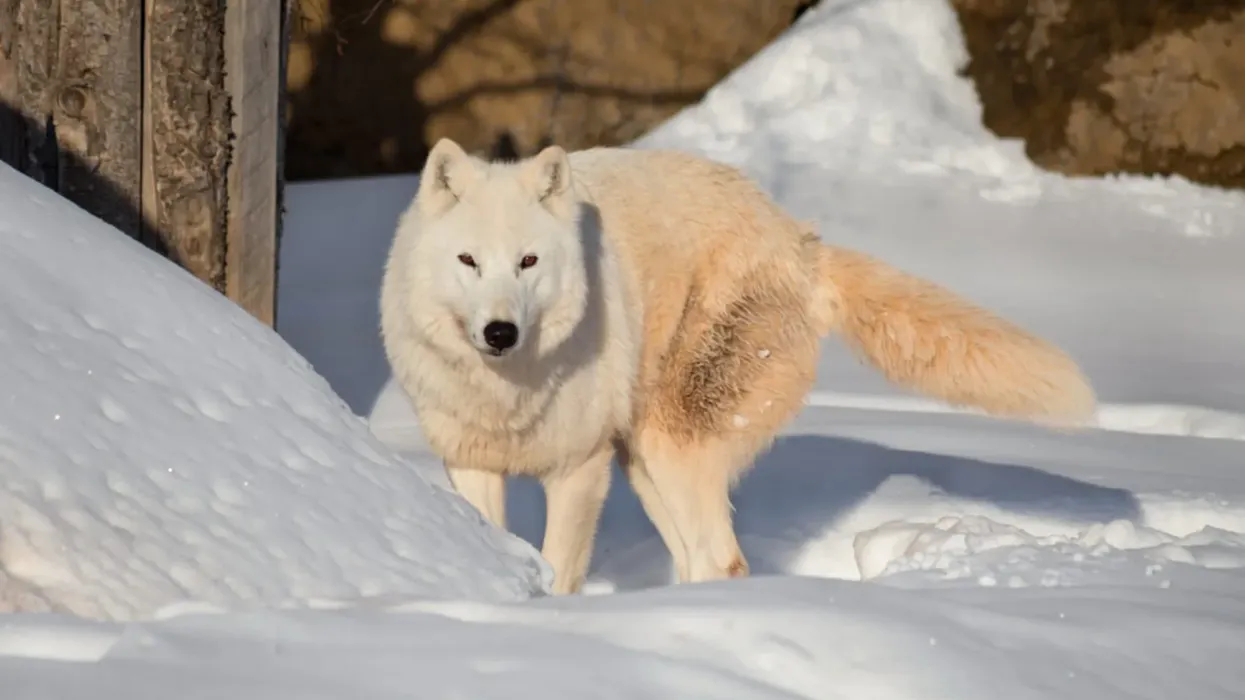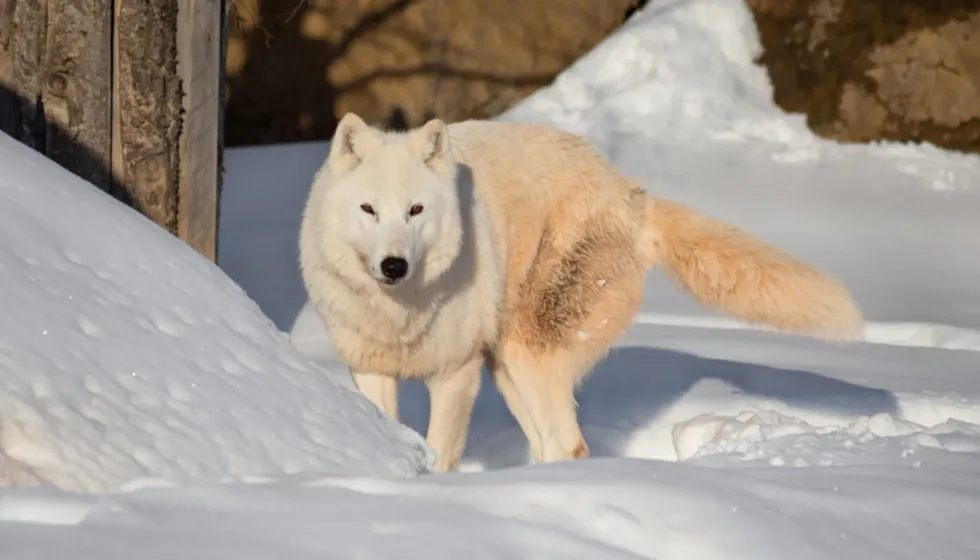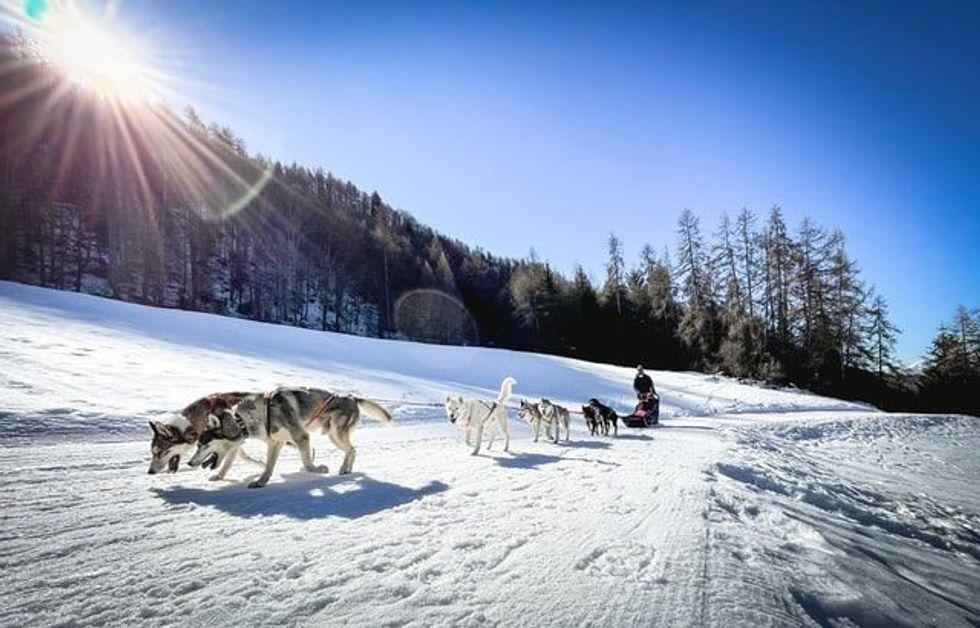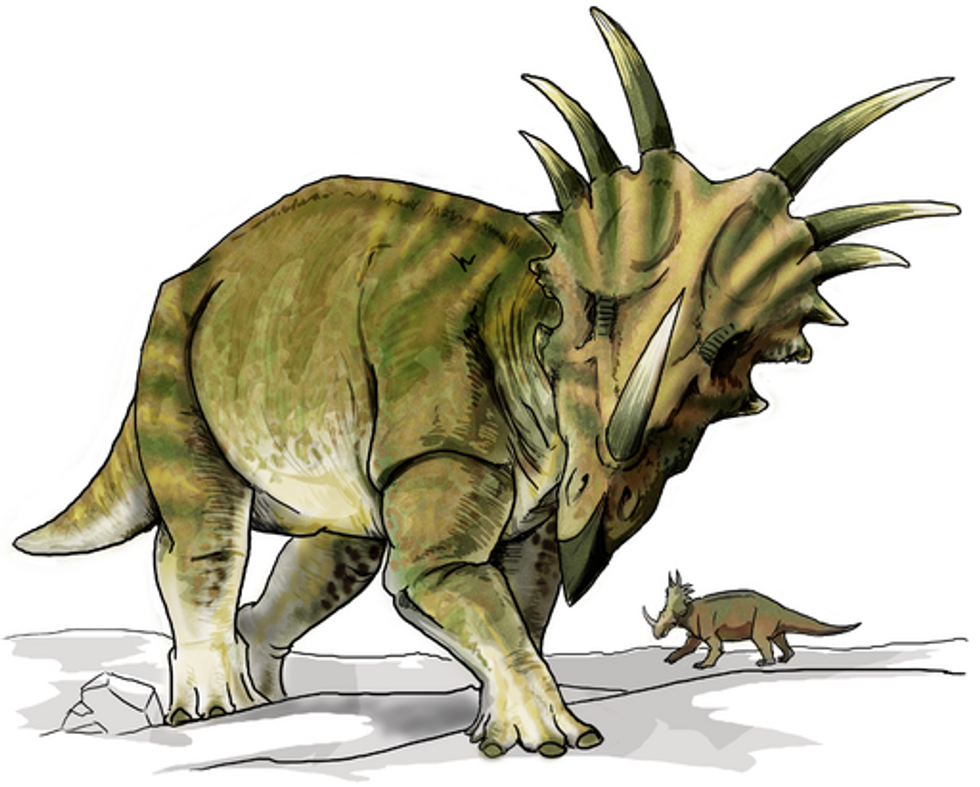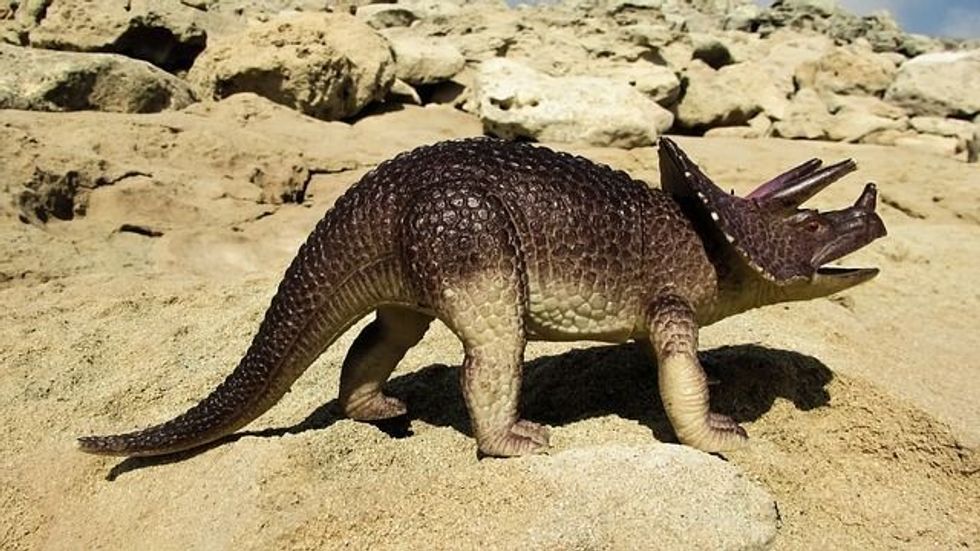You've seen fearsome wolves in movies and on TV, but what about in real life? The Alaskan tundra wolf is one of the most dangerous wolves living in the winter-covered tundras.
However, they are not found traveling the cold lands alone. They always travel in small to medium-sized groups called packs. Usually consisting of a dominant male and female and some other members, they hunt together, stay together, and raise their young.
They are found in various colors, such as black, gray, silvery-white, and other lighter shades. This helps them camouflage in the polar habitat and allows them to hunt since they can get closer to their prey without being identified.
You can read all about this interesting animal and many others like it right here! Learn all about this majestic wolf, its life in the winter lands, and many other facts, or read up on other animals like the Husky wolf mix and eastern red wolf. Happy reading!
Alaskan Tundra Wolf Interesting Facts
What type of animal is an Alaskan tundra wolf?
The tundra wolf (Canis lupus) is a type of wolf.
What class of animal does an Alaskan tundra wolf belong to?
Tundra wolves belong to the class of mammals.
How many Alaskan tundra wolves are there in the world?
Today, there are about 200,000 of the tundra wolf (Canis lupus) populated worldwide.
Where does an Alaskan tundra wolf live?
The Canis lupus tundrarum lives in the polar region. The Canis lupus tundrarum range is throughout much of the Arctic Region, including Alaska, Greenland, and northern Canada.
What is an Alaskan tundra wolf's habitat?
For most of the year, the Alaskan tundra wolf habitat is snow-covered, including barren frigid ground. Red wolves that habitat in swamps, marshes, and coastal prairies usually walk on tiptoes, which means their toes make touch with the ground, but their heels remain elevated.
Who do Alaskan tundra wolves live with?
The tundra wolf is a member of a pack. These gray wolves live in well-organized communal groups of up to twenty animals. A breeding female and male are leading this Alaskan tundra wolf pack.
How long does an Alaskan tundra wolf live?
The life span of the red Alaskan tundra wolf (Canis lupus tundrarum) is around 16 years.
How do they reproduce?
These wolves are found in packs of 7-10 individuals. There is a complicated social order within wolf packs, and each pack has a commanding female and male who mate for life. During the breeding season, which runs from January-March, the breeding couple mates. The pregnant alpha female has a gestation span of 53-61 days.
The female Alaskan tundra wolf gives birth to two to three pups. The Alaskan tundra wolf pup is deaf and blind by birth. Therefore, females rely on their male partners to provide nourishment to them.
The pups' eyes open around 10 days, but they can listen at around three weeks. The pups are ready to consume meat after a month.
From then on, the entire pack takes turns feeding the pups, delivering meat that they regurgitate. Each pup will be licked, nuzzled, and sniffed by each member of the pack. Squeaks and tail wags are the pups' responses.
After 8-10 weeks, they depart the den to explore the outer world. They are ready to mate at two to three years.
What is their conservation status?
The conservation status of the tundra wolf (Canis lupus) located along the Northern Alaskan coast is the Least Concern declared by IUCN Red List.
Alaskan Tundra Wolf Fun Facts
What do Alaskan tundra wolves look like?
Year-round, these grayish-black Alaskan wolves possess white coats, which helps them blend in with their icy surroundings. Their underfur is smooth and thick, and their coat is silky and long.
It has a lanky appearance due to its long bushy tail and long legs. The claws are non-retractable, and the feet are big and digitate. There are five toes on the forefeet and four on the hind feet.
The ears and face are well-defined, and the skull is large. This wolf is a gray wolf subspecies (Canis lupus). They are distinguished from other Canis lupus subspecies (like tundra wolf) by their year-round snowy thick coats and relatively short ears with noses.
These white-colored wolves look a lot like Interior Alaskan wolves, but they're a little lighter in color. Females are usually smaller than males.

How cute are they?
These Arctic wolves (distribution range is near the coast of Northern Alaska) are cute-looking species. Their furry white hair (sometimes gray blended with black) and dog-like features present them look attractive and fascinating.
How do they communicate?
The black Alaskan tundra wolf has a large visual lexicon that communicates social status, emotions, and intentions. Wolves scream for various reasons, including bringing the pack together before and after hunting and warning neighboring packs about their territories.
Urine or excrement can be seen on stones and snow banks on their hunting tracks. Friendship, fear, violence, social tension, and obedience are all associated with tail motions.
How big is an Alaskan tundra wolf?
The Alaskan tundra wolf size is comparatively large, and the length range of these white tundra wolves measures about 44-54 in (111.7-137.1 cm). On the other hand, the maned wolf length range is between 50-52 in (127-132 cm). Thus, the length of tundra wolves is smaller than that of maned wolves.
How fast can an Alaskan tundra wolf run?
Tundra wolves flee from muskoxen, caribou, or other prey during hunting. For short time periods, these wolves may attain high speeds of around 40 mph (64.3 kph).
How much does an Alaskan tundra wolf weigh?
The weight of gray wolf, Canis lupus tundrarum is between 81-108 lb (36.7-49 kg). However, unconfirmed sources claim that some weigh as much as 220 lb (99.79 kg). The North American species gray foxes are average-sized animals; that weight range is up to 4.4-19.8 lb (2-9 kg).
What are the male and female names of the species?
The males and females species of these wolves presently found in North America and Northern Alaska have no particular title.
What would you call a baby Alaskan tundra wolf?
The baby species of this large gray wolf (distribution area is near the coast of Northern Alaska) that are deaf and blind at the time of birth don't have any significant name.
What do they eat?
Large mammals like deer, moose, wapiti, bison, caribou, and mountain sheep are their primary prey (diet). However, the beaver is their tiniest prey, which they catch regularly. In one feeding, an adult tundra wolves weighing 81–108 lb (36.7-49 kg) can eat up to 20 lb (9 kg).
The Alaskan tundra wolf facts show that they are intelligent when it comes to selecting prey or diet. They hunt for old, injured, or weak animals (such as deer and caribou) that are simpler to trap. Wolves put up a lot of effort to catch their victim, and they devour everything, including the bones.
Are they dangerous?
Alaskan tundra wolves, like Arctic wolves, aren't dangerous unless they're in trouble. When other wolves or humans encroach into their territory, these wolves can become violent. Otherwise, while traveling with the rest of their group, these wolves prefer to remain unseen.
Would they make a good pet?
Because the gray wolf is a wild animal, it is only marketed as a pet if domesticated or mated with a purebred dog such as a Siberian husky or German Shepherd. The tundra wolf is often regarded as a wolfdog or wolf hybrid when bred with purebred.
Did you know...
Tundra wolves, often known as 'gray wolf,' reside in the Arctic regions (Greenland and North America). This wolf is not threatened by poaching or habitat degradation because of its isolation.
They can be encountered in forests, mountains, the Arctic tundra, deserts, and prairies, though they avoid intensively planted or urbanized regions.
Northern Canada, Alaska, Greenland, and Iceland are all homes for Arctic wolves. These wolves habitat the entire year in such Arctic regions.
When we talk about the Alaskan tundra wolf adaptations, these wolves are adapted to living in frigid climates. These wolves have more curved and shorter ears, a smaller muzzle, shorter legs than other gray wolf subspecies that prevent heat loss. In addition, Arctic wolves possess two layers of fur, each of which is thicker than the other.
What is unique about the Alaskan tundra wolf?
The gray wolf has a lot of stamina and can wear down prey animals over time instead of overpowering them with speed and force.
Why is it known as the barren ground wolf?
The Canis lupus tundrarum (Alaskan tundra wolf), also identified as the barren-ground wolf, is a gray wolf subspecies endemic to the barren tundra of the Arctic littoral tundra region of North America.
Here at Kidadl, we have carefully created lots of interesting family-friendly animal facts for everyone to discover! For more relatable content, check out these burrowing owl facts and tundra wolf facts for kids.
You can even occupy yourself at home by coloring in one of our free printable tundra wolf coloring pages.

